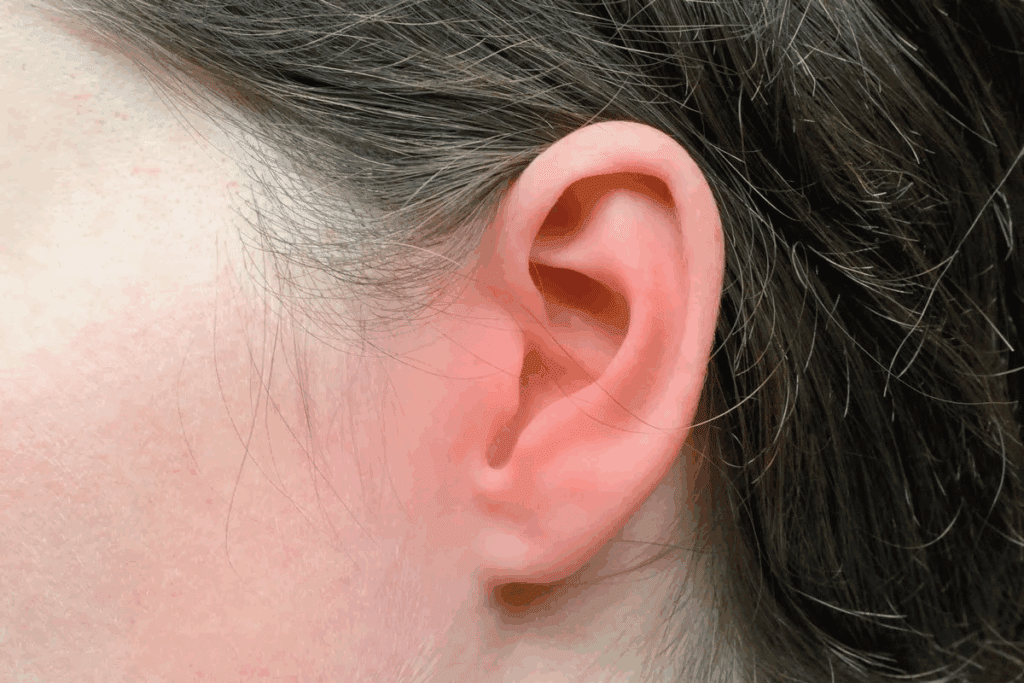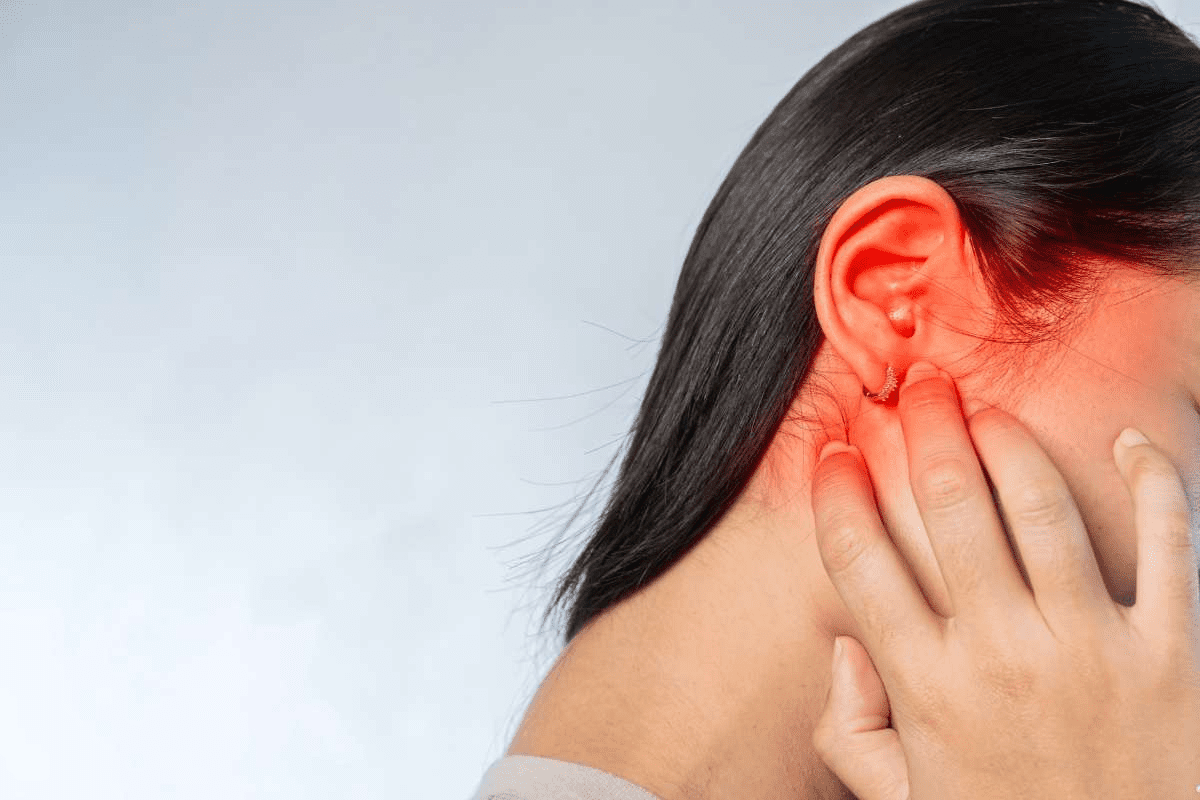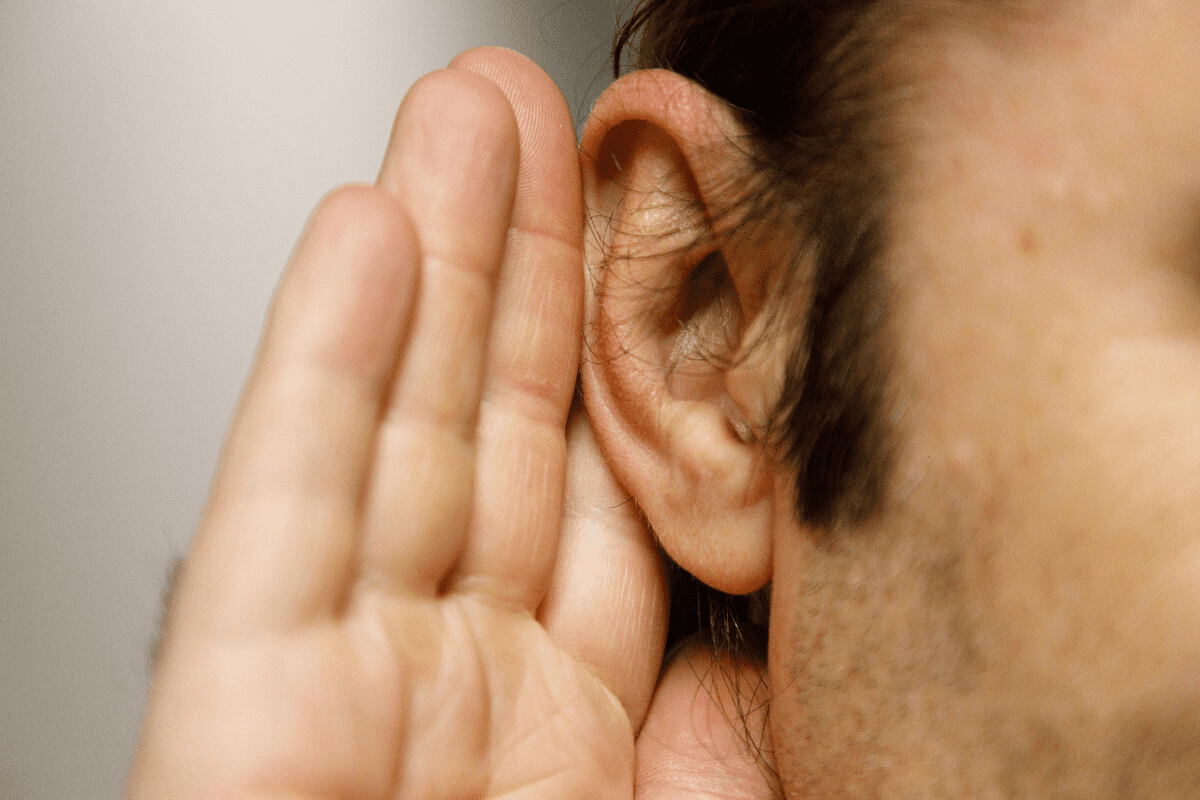Last Updated on November 27, 2025 by Ugurkan Demir

Are you tired of dealing with ear infections that keep coming back? You’re not alone. Millions of people worldwide face chronic and recurring ear infections. They deal with pain, hearing problems, and endless treatment cycles.
It’s important to understand why chronic otitis media happens. We’ll look at why ear infections keep coming back. This includes Eustachian tube issues, bacteria and viruses, and other factors.
Why do I have constant ear infections? Learn about the underlying causes, such as Eustachian tube dysfunction, allergies, and recurrent colds.

It’s important to know about the different ear infections and how common they are. Ear infections can bother people of all ages. They can cause pain and lead to bigger problems if not treated right.
There are several types of ear infections:
About 30-40% of kids get otitis media more than once. The rate of recurrence changes with age and is affected by things like ear shape and immune strength.
Studies show:
Ear infections happen more often in some age groups than others. This is because of differences in ear shape, body function, and immune system strength.
For example:

To understand why ear infections keep coming back, we need to know about the ear’s parts. The ear is made up of three main parts: the outer ear, middle ear, and inner ear. Each part is important for hearing and keeping the ear healthy.
The outer ear catches sound waves and sends them into the ear canal. The ear canal then sends these sounds to the eardrum. The middle ear is behind the eardrum and has three small bones that make sound louder. The inner ear has the cochlea, which turns sound vibrations into signals the brain understands as sound.
Ear infections happen when germs, like bacteria or viruses, get into the ear and cause swelling. The middle ear is more likely to get infected because of its link to the back of the throat through the Eustachian tube. If the Eustachian tube is blocked or not working right, fluid can build up in the middle ear. This makes it easy for germs to grow.
Germs like Streptococcus pneumoniae, Haemophilus influenzae, and Moraxella catarrhalis often cause ear infections. Knowing about these germs helps us find better ways to treat infections.
The Eustachian tube is key to keeping the ear healthy. It helps control air pressure in the middle ear and drains mucus. When it works right, it opens and closes to let air in and mucus out. But if it’s blocked or not working, it can cause ear infections.
Eustachian Tube Function | Impact on Ear Health |
Regulates air pressure | Prevents fluid buildup |
Drains mucus | Reduces risk of infection |
Dysfunction | Increased risk of ear infections |
Knowing about the ear’s parts and the Eustachian tube’s role helps us understand how infections start and keep coming back. By knowing what causes ear infections, we can work to prevent and manage them better.
Many people deal with ear infections that keep coming back. It’s key to find out why to treat them right. These infections can happen for many reasons, like bacteria, viruses, Eustachian tube problems, and ear shape issues.
Bacteria like Pseudomonas aeruginosa and Staphylococcus often cause ear infections. They can get into the ear canal or middle ear. To fight bacterial ear infections, doctors usually prescribe antibiotics.
Viruses like RSV and the flu can also cause ear infections. They make the middle ear inflamed and filled with fluid. Most viral ear infections get better on their own, but can sometimes turn into bacterial infections.
The Eustachian tube is important for ear health. It helps with air pressure and draining mucus. If it doesn’t work right, fluid builds up and infections can happen. Doctors might use nasal sprays or try to open the Eustachian tube to help.
How the ear canal and Eustachian tube are shaped can make you more likely to get ear infections. Kids are more at risk because their Eustachian tubes are shorter. Knowing this helps doctors find better ways to prevent and treat ear infections.
Anatomical Factor | Impact on Ear Infections |
Shorter Eustachian tubes in children | Increased susceptibility to ear infections |
Deviated septum | Potential for Eustachian tube dysfunction |
We look at what makes you more likely to get ear infections. Knowing these factors helps prevent and treat them.
Allergies can raise your risk of ear infections. When you have allergies, your immune system can cause inflammation and blockage in the Eustachian tubes. This makes it easier for germs to get into your ear.
Allergic reactions can block or mess up the Eustachian tubes. This stops them from draining fluid from your middle ear. This is a perfect spot for germs to grow, causing infections.
Sinusitis and other upper respiratory issues can lead to ear infections. When your sinuses get inflamed or infected, it can mess up the Eustachian tubes, just like allergies do.
Infections or inflammation in your sinuses can easily spread to your ears. Managing sinusitis well is key to avoiding ear infections.
Swimming and other water activities can up your risk of ear infections. Water can get into your ear canal, bringing in germs.
To lower this risk, make sure to dry your ears well after swimming. Avoid getting your head underwater. Using earplugs or other protective gear can also keep water out of your ear canal.
Genetics can also play a part in your risk for ear infections. Some people are more likely to get ear infections because of their genes. This can affect how well their Eustachian tubes work.
Knowing your genetic risk can help you take steps to prevent ear infections. If you have a family history of ear infections, watch out for other risk factors. Also, get medical advice early.
It’s important to know how ear infections affect people at different ages. These infections can happen to anyone, but they show up in different ways in kids, adults, and the elderly. The way they happen and the problems they cause can vary a lot.
Children often get ear infections because their Eustachian tubes are different. These tubes are shorter and more horizontal than in adults. This makes it easier for germs to get into the middle ear and cause infections.
Also, kids’ immune systems are not fully grown yet. This makes them more likely to get sick. Their ear shape and immune system together make them more likely to get ear infections.
Ear infections are more common in kids, but adults can get them too. Adults might get infections because of allergies, sinus problems, or issues with their Eustachian tubes.
Adults face special challenges, like how ear infections can affect their daily life and work. The pain and discomfort can really impact their quality of life.
Elderly people have their own set of challenges with ear infections. As people get older, their immune system weakens and they might have other health issues. This can make it harder to diagnose and treat ear infections.
Older adults might also face more serious problems from ear infections, like hearing loss or balance issues. So, it’s very important to treat ear infections quickly and properly in this age group.
Age Group | Common Causes | Unique Challenges |
Children | Infections, Eustachian tube dysfunction | Developing immune system, anatomy |
Adults | Allergies, sinusitis, Eustachian tube dysfunction | Impact on daily activities, work |
Elderly | Age-related immune decline, underlying conditions | Severe complications, hearing loss |
It’s important to know the signs of recurring ear infections to get the right care. These infections can happen to anyone, but symptoms differ in adults and kids.
Adults with ear infections often feel ear pain, pressure, and hearing loss. These feelings can come and go. They might also have discharge or feel like their ear is full.
Common symptoms in adults include:
The American Academy of Otolaryngology says ear pain is a big issue for adults with infections. It can really affect their daily life.
Young kids can’t always tell us how they feel. They might seem irritable, have a fever, or have trouble sleeping. They might also pull at their ears or have trouble balancing.
Unique symptoms in children include:
A study in the Journal of Pediatrics found fever is a big sign of ear infections in kids. Sometimes, it’s the only symptom they show.
Most ear infections aren’t serious, but some signs mean trouble. Look out for severe ear pain, high fever, discharge that’s bloody or smells bad, and hearing loss that doesn’t go away.
Warning Sign | Description |
Severe Ear Pain | Persistent or severe pain that doesn’t respond to over-the-counter pain relievers |
High Fever | Fever above 102°F (39°C) that lasts more than a few days |
Bloody or Foul-Smelling Discharge | Discharge that is not clear or is accompanied by a bad odor |
Persistent Hearing Loss | Hearing loss that continues after the infection has been treated |
If you or your child has any of these signs, get medical help right away.
Diagnosing chronic ear infections requires a few steps. First, your healthcare provider will ask about your medical history. Then, they will examine your ear canal and eardrum with a tool called otoscopy. This helps spot any infection or damage.
Other tests might be used too. Tympanometry checks how well your eardrum moves and your middle ear muscles work. It also looks at the Eustachian tube and middle ear fluid.
They might also do a tympanocentesis. This is when they suck out fluid from your middle ear for testing. It helps find out what’s causing the infection and what treatment to use.
Antibiotics are key for treating bacterial ear infections. The choice to use them depends on the infection’s severity, your age, and if it’s caused by bacteria or a virus. For long-lasting or recurring infections, antibiotics might be used for a longer time or to prevent future infections.
Doctors say, “Using antibiotics wisely is important. It helps fight infections without making bacteria resistant.”
Anti-inflammatory drugs are also used. They help reduce swelling and ease symptoms. You might get over-the-counter pain relievers or stronger corticosteroids for severe cases.
If medical treatments don’t work, surgery might be needed. The most common surgery is putting in tympanostomy tubes, or ear tubes. These tubes help keep the middle ear dry and prevent infections.
In some cases, surgery to fix anatomical problems might be suggested. This includes removing adenoids or fixing a deviated nasal septum. These surgeries help lower the chance of getting infections again.
Medical care is key for ear infections, but home remedies can help too. Using these methods can ease symptoms and aid in recovery.
Managing pain is important when you have an ear infection. You can use over-the-counter pain relievers like acetaminophen or ibuprofen. Always check the dosage and talk to a doctor before giving these to kids.
Applying a warm compress to your ear can also help. Soak a cloth in warm water, wring it out, and place it on your ear for a few minutes. This can ease pain and help you relax.
Heat and cold can both help with ear infection symptoms. Try using warm and cold compresses alternately to reduce pain and swelling. Use a warm washcloth or heating pad for heat, and a cold pack or frozen peas for cold.
Some natural remedies can help with ear infection symptoms. Nasal saline irrigation can clear mucus and prevent infection. Use a neti pot or a squeeze bottle with saline solution.
Garlic oil is another natural remedy with antimicrobial properties. But, always check with a doctor before trying new remedies, like if you have a perforated eardrum.
Changing your lifestyle can help you recover from ear infections. Rest well and drink plenty of water to fight the infection. Also, avoid smoke and allergens.
Good hygiene, like washing your hands often, can prevent infection spread. Combining these lifestyle changes with medical care and home remedies can improve your ear health.
Ear infections that keep coming back can be more than just a nuisance; they can indicate a need for professional medical evaluation. We understand that recurring ear infections can be frustrating and painful. It’s essential to know when to seek medical help.
Certain symptoms warrant immediate medical attention. If you experience severe ear pain, fever, or hearing loss, you should consult a doctor without delay. These symptoms can indicate a more serious infection that requires prompt treatment.
Other warning signs include discharge from the ear, dizziness, or a high fever that persists. If you’re experiencing any of these symptoms, it’s critical to seek medical help to prevent further complications.
Untreated ear infections can lead to several complications. These include mastoiditis, an infection of the bone behind the ear, and permanent hearing loss. In rare cases, the infection can spread to other parts of the head, leading to more severe conditions.
If you’re experiencing recurring ear infections, you may need to consult an ear, nose, and throat (ENT) specialist. An ENT specialist can provide a thorough examination and recommend appropriate treatment options.
To find the right specialist, ask your primary care physician for a referral or check with your insurance provider for a list of in-network ENT specialists. You can also check online reviews and ratings to find a specialist with a good reputation.
Recurring ear infections can be tough to handle. But, by knowing the causes and using the right treatments, we can stop them. We’ve looked at why ear infections keep coming back, like bacteria and viruses, and how our body’s tubes and shape play a part.
Spotting the signs early and getting help is key. This way, we avoid bigger problems and cut down on ear infections. To manage chronic ear infections, we need medicine, changes in our daily life, and taking care of ourselves. By doing this, we can keep our ears healthy and feel better overall.
This guide has given us important tips and advice for fighting ear infections. By following these steps, we can lower our chances of getting ear infections and live better. To truly stop ear infections, we must tackle the root causes and focus on keeping our ears in good shape.
Ear infections can happen again due to several reasons. These include problems with the Eustachian tube, infections from bacteria or viruses, and issues with the ear’s shape. Allergies, sinus infections, and genetics also play a role.
Getting ear infections often can be because of swimming, colds, or ear shape issues. Knowing these reasons can help prevent future infections.
Ear infections keep coming back because of Eustachian tube problems, constant exposure to germs, or not treating allergies or sinusitis.
To stop ear infections from coming back, find and fix the main causes. This might mean getting medical help, changing your lifestyle, or avoiding things that trigger allergies or sinusitis.
Adults with recurring ear infections might feel ear pain, hear less, have ringing in their ears, or feel dizzy. Spotting these signs early is key to getting help.
Kids get ear infections more because their Eustachian tubes are growing, they’re exposed to more germs, and they’re at a certain age.
For chronic ear infections, treatments include antibiotics, anti-inflammatory drugs, and sometimes surgery. The right treatment depends on the cause and how bad the infection is.
Yes, home remedies like pain relief, heat or cold, and natural treatments can help with ear infection symptoms. But, you should also see a doctor for a proper diagnosis and treatment.
You should see a doctor if you have severe ear pain, a fever, or can’t hear well. Untreated infections can cause serious problems, and a doctor can help.
Untreated ear infections can cause hearing loss, mastoiditis, or meningitis. Getting medical help quickly is important to avoid these serious issues.
To prevent ear infections from coming back, tackle the main causes like allergies, sinusitis, and swimming. Making lifestyle changes and taking preventive steps can help.
Some natural remedies, like those with germ-fighting properties, might help prevent ear infections. But, always talk to a healthcare expert before trying new remedies.
Yes, issues like a crooked septum or big adenoids can lead to recurring ear infections. They can mess with the Eustachian tube or make it easier for germs to get in.
National Center for Biotechnology Information. (2025). Why Do I Keep Getting Ear Infections Causes. Retrieved from https://pubmed.ncbi.nlm.nih.gov/3540247/
Subscribe to our e-newsletter to stay informed about the latest innovations in the world of health and exclusive offers!